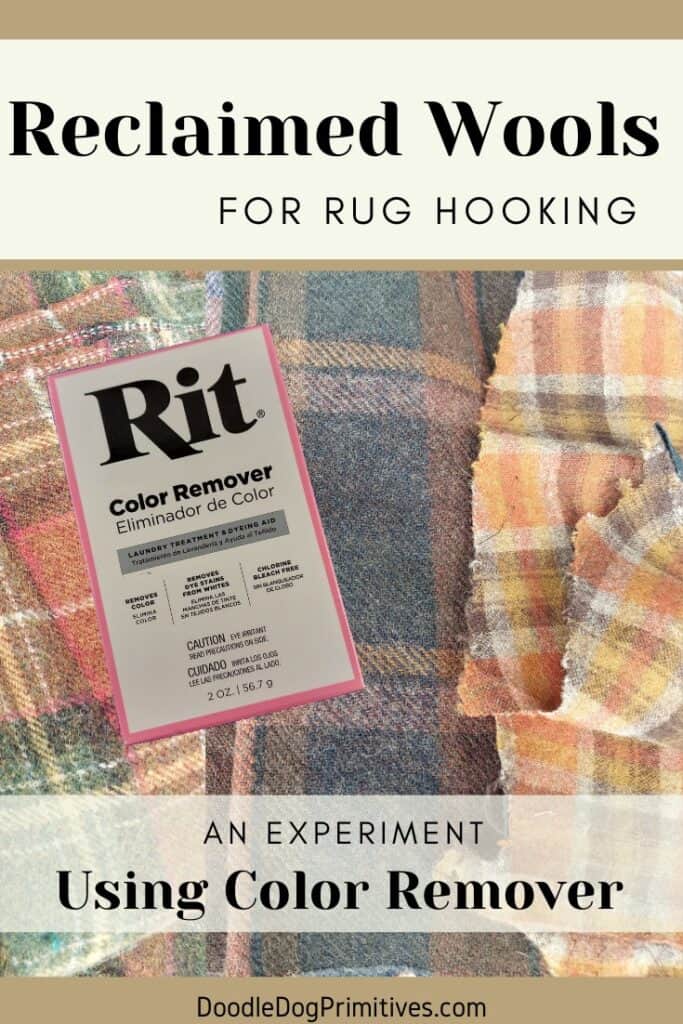
I ran across some Rit Color remover in the clearance section at a store and decided it would be fun to try an experiment using the color remover on some wools that had been reclaimed from old clothing.
My mom has quite a stash of recycled wools that she uses for her rug hooking projects. She was able to round up five different pieces that were colors she hadn’t ever found a way to use.
Since Rit color remover is not bleach, but is chlorine free, it should be possible to dye the fabric after using it. We were hoping the colors would be removed enough that we could over-dye the wool new colors. That isn’t at all what happened in our experiment, but the end result isn’t bad. In fact, they are now colors that she feels she will use in future hooked rugs.
Watch the Video:
This post may contain affiliate links for your convenience, which means if you make a purchase after clicking a link I will earn a small commission but it won’t cost you a penny more. For more information, please visit our Privacy Policy.
The Wools:
We started with clean, felted wools.
We grouped the wools into two different groups based on their colors. We made an orange / brown group.

And we made a group that had more of a maroon / purple look to them.

We pre-soaked all of the wools in water in their color groupings.
Using the Color Remover:
We followed the directions on the container of Rit color remover. The instructions say to use in a well ventilated area so we set up the propane burner (that we use for turkey frying) outside.
The cooking pot and utensils we used are ones that are used exclusively for dyeing and NOT for cooking!
After bringing the water in the pot to a simmer, I put on some gloves and a face mask (so I didn’t breathe the powder) and added the packet of color remover to the water.

The instructions say to stir until the powder is dissolved.
After the powder was dissolved, we added one color grouping of wools, one piece at a time.
The instructions say to stir constantly and simmer for 10-30 minutes.
It didn’t take long for the color of the water to start to change.

Honestly, we forgot to time this, but we definitely cooked each batch for longer than 30 minutes.
We took the wool out, rinsed it in warm water, and then washed it and dried it outside in the fresh air.
We then repeated the process with a new box of color remover for the other color grouping of wool.
Results of Color Removing Experiment on Wools:
Although the color of the water suggested that a lot of dye had been removed, we didn’t end up with pale wools that would be easy to re-dye a different color.

It is interesting how these two ended up very purple looking after this process. Again, not what we were hoping to get, but they are a pretty color. I can see her being able to use them for flowers now.

I think these three are also better shades for her. She likes hooking in a primitive style with muted colors. There is definitely a lot less green in the wool on the right.

It would be a good experiment to only put one wool in the pot and try using a solid color of wool instead of a plaid. Perhaps it would also work better if done BEFORE felting the wool.


